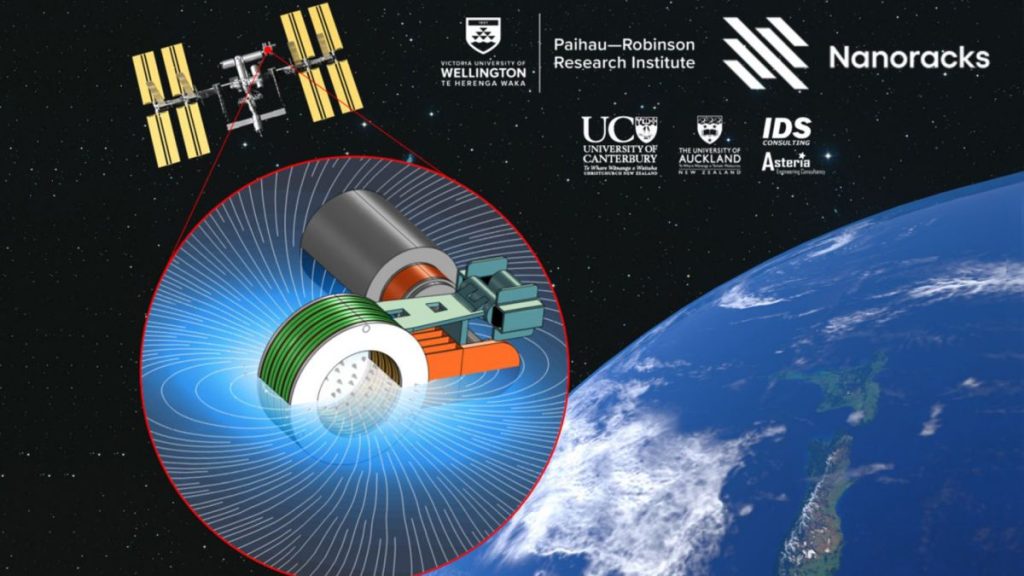
Novel superconducting magnet thrusters to be tested out on space station (Image Credit: Space.com)
A New Zealand research institute and U.S. commercial firm Nanoracks are combining to send a superconducting magnet technology demonstrator to the International Space Station to test a novel type of space propulsion.
The Paihau—Robinson Research Institute intends to test a type of electric space thruster known as applied-field magneto plasma dynamic (AF-MPD) thrusters which uses high-temperature superconducting (HTS) magnet technology developed by the institute.
Superconductors are materials that conduct electricity with zero resistance and therefore with much greater efficiency than conventional conductive materials. Most of these superconductors, however, require temperatures close to the absolute zero (-273 degrees Celsius or – 460 degrees Fahrenheit), which complicates their use. High-temperature superconductors (HTS) can operate at somewhat friendlier temperatures of −321.1 degrees F (−196.2 degrees C), which makes their operations cheaper. On top of that, HTS can generate stronger fields than low temperature superconductors, have a larger operational range and can be more compact, the Paihau—Robinson Research Institute wrote in a statement (opens in new tab).
Related: Nanoracks tests tech to slice up space junk in orbit for 1st time
The AF-MPD thrusters, based on the HTS technology, use a combination of magnetic and electric fields to generate thrust. The researchers believe they could potentially provide propulsion solutions for large spacecraft instead of electric thrusters.
Superconducting magnets could have a number of other important roles to play in space exploration. The Earth’s magnetic field protects life on the planet from harmful solar radiation and cosmic rays. A strong magnetic field generated aboard a spacecraft could provide protection in the same way for astronauts in deep space.
The mass and power requirements of magnetic components have been a key technological barrier to using this kind of equipment in space. This is where Paihau—Robinson aims to make advances using their HTS magnet technology.
The tech demonstrator will be installed onto the Nanoracks External Platform by astronauts aboard the International Space Station. A team on the ground will then operate the magnet over several months to demonstrate the ability to generate a magnetic field thousands of times stronger than that of Earth.
The operation of the demonstrator in a relevant space environment is an important step toward the validation and commercialization of this key enabling technology, project manager Avinash Rao said in the statement.
Nanoracks’ Maggie Ahern says the payload is currently expected to launch no earlier than the first quarter of 2024. The Houston-based firm Nanoracks hosts payloads on the orbital outpost through an agreement with NASA, providing power, telemetry and other services.
Paihau—Robinson is leading the project with support from the University of Auckland, the University of Canterbury, IDS Consulting, and Asteria Engineering Consulting.
Follow us on Twitter @Spacedotcom and on Facebook.





